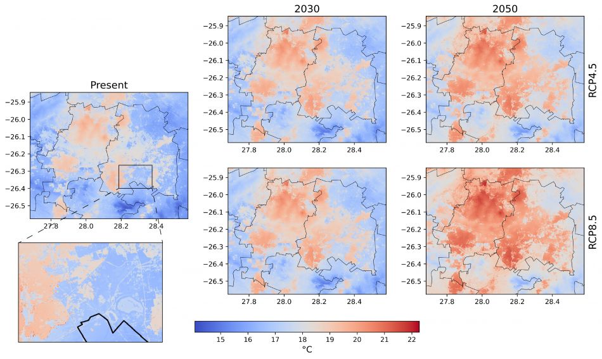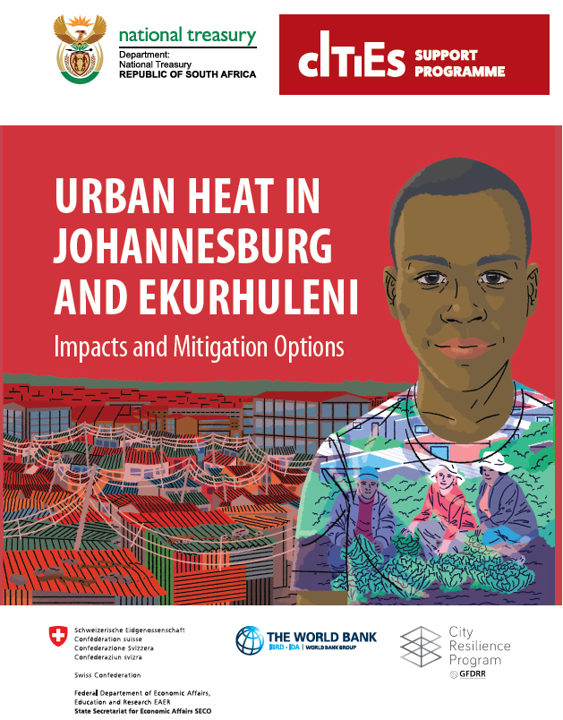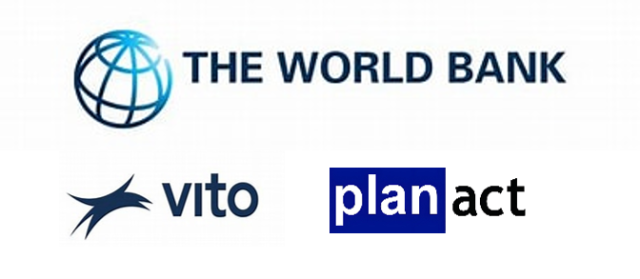Facilitate community-driven urban heat monitoring campaign and policy support in Johannesburg and Ekurhuleni
Context
Observations show that in Johannesburg and Ekurhuleni, temperature has increased by more than 1.5°C relative to the period 1850-1900. According to the most recent climate projections, temperatures in the Johannesburg-Ekurhuleni area will continue to increase. As a result, the future climate of the Johannesburg-Ekurhuleni area will be at par with the climate currently encountered in certain regions in India, North Australia, and areas close to the Sahel. Since both metros are highly urbanised, exposure to extreme heat is exacerbated by the urban heat island phenomenon: the fact that cities tend to be warmer than nearby rural areas. The increasing temperatures pose significant health risks and underscore the urgent need for climate adaptation measures in the face of rising heat stress.
Objectives
This project was defined by the World Bank around 3 major objectives:
- Create detailed science-based heat maps for the metros of Johannesburg and Ekurhuleni;
- Generate public awareness, empowerment, and support for heat remediation actions through the involvement of local communities in the data collection;
- Support both metros to prioritize urban heat mitigation interventions.
Highlights
- Based on advanced urban climate simulations, a map of the night-time urban heat island intensity (urban-rural temperature difference) was produced.
- Using building and vegetation data, local maps at street-level scale were created for 6 neighbourhoods using the wet bulb globe temperature (WBGT) as a heat indicator.
- Heat stress measurements were collected, involving community participants, and focusing on the contrasting heat stress levels found between shaded and sun-exposed locations. These urban heat monitoring campaigns aimed to measure the heat stress in six neighbourhoods in Ekurhuleni and Johannesburg, including informal settlements, central business districts, residential suburbs, and industrial areas, to build a comprehensive view of how temperature varies in different urban settings.
- Elaboration of a set of concrete heat adaptation measures, based on the detailed heat stress exposure and vulnerability analysis. The latter has been published in the journal Urban Climate (“Urban heat in Johannesburg and Ekurhuleni, South-Africa: a meter-scale assessment and vulnerability analysis”, Souverijns et al., 2022).
- Heat stress indicators can be downloaded as high-resolution images or geo-referenced GeoTiffs. 3D-animations of heat stress can be found here.
“This report is a crucial policy informant as it provides scientific data and a clear policy directive on urban heat impacts in the City. The adaptation measures laid out in this report will be implemented to build climate resilience and reduce the impacts of heat in the City of Ekurhuleni.”
Ms Faith Wotshela, Head of Department Environmental Resource and Waste Management, City of Ekurhuleni
Facts
Budget: USD 149,540.00
Funded by the State Secretariat for Economic Affairs (SECO) of Switzerland under the Urban Multi-Donor Trust Fund for South Africa and by the Global Facility for Disaster Reduction and Recovery (GFDRR)
Implemented by
- VITO
- PLAN ACT making towns and cities work for people



